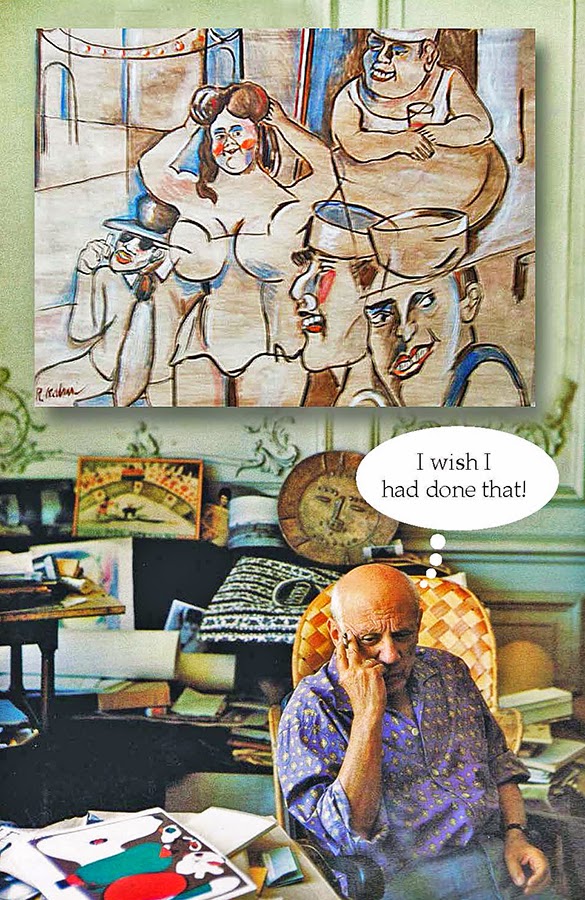A little over two years
ago, while visiting my son Ned in California, I had my Tarot cards read. The
reader, a friend of his – appropriately named Magick - conducted her business
at the local teahouse in Sebastopol, the rich, hippie town where he lives. Now,
I’m not much of a believer in things like Tarot or astrology or fortune telling
or spiritualism of any sort. When the reader gets things right, it is usually
because he or she is good at picking up clues from her subject. Besides, people
all have the same kinds of problems; you can’t go wrong concentrating on love, health and money.
 When I laid out the Tarot
cards it was obvious, even to a novice like me, that they were good: no morbid
images, lots of cheerful princesses, knights and queens. This was my year, she
declared; Uranus (my birth sign) was apparently concluding an orbit of the sun
that coincided with my age, a good omen. She also announced that I needed to
write about art. Now, I’m a pretty good writer; I’ve been doing a preservation
newsletter for years now and writing comes easily to me. I don’t consider
myself a professional writer so I don’t have much angst about it. However, I
never considered writing about art. Most of it is gibberish anyway and besides,
who would read it?
When I laid out the Tarot
cards it was obvious, even to a novice like me, that they were good: no morbid
images, lots of cheerful princesses, knights and queens. This was my year, she
declared; Uranus (my birth sign) was apparently concluding an orbit of the sun
that coincided with my age, a good omen. She also announced that I needed to
write about art. Now, I’m a pretty good writer; I’ve been doing a preservation
newsletter for years now and writing comes easily to me. I don’t consider
myself a professional writer so I don’t have much angst about it. However, I
never considered writing about art. Most of it is gibberish anyway and besides,
who would read it?  When I came back to
Stamford, I showed my friend Cici what Magick had written and Cici suggested I
write a blog. “You’d be perfect,” was her advice. “But I’m not good enough at
the computer,” I wailed. “It’s beyond me technically.” “Hire someone,” she
replied, which I did - Rosie, my next-door neighbor. The rest you know. I’ve
been blogging for almost a year and a half now and can’t tell you how much fun
it has been – and all the interesting people who have come into my life because
of it. I get a little repetitious sometimes, but all old friends tend to tell
each other the same stories over and over again, so please forgive me.
When I came back to
Stamford, I showed my friend Cici what Magick had written and Cici suggested I
write a blog. “You’d be perfect,” was her advice. “But I’m not good enough at
the computer,” I wailed. “It’s beyond me technically.” “Hire someone,” she
replied, which I did - Rosie, my next-door neighbor. The rest you know. I’ve
been blogging for almost a year and a half now and can’t tell you how much fun
it has been – and all the interesting people who have come into my life because
of it. I get a little repetitious sometimes, but all old friends tend to tell
each other the same stories over and over again, so please forgive me.
Magick also advised me to
do two other things: 1) drink a glass of warm water with lemon every morning (“to
quench the fire within me”) and 2) “get rid of the boyfriend,” (easier said
than done.) But she probably gave that advice to every woman who came to see
her, and, 90% of the time, she was right.
















